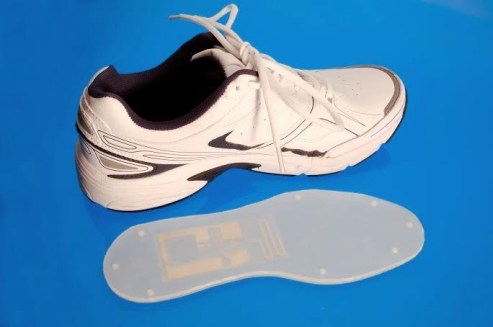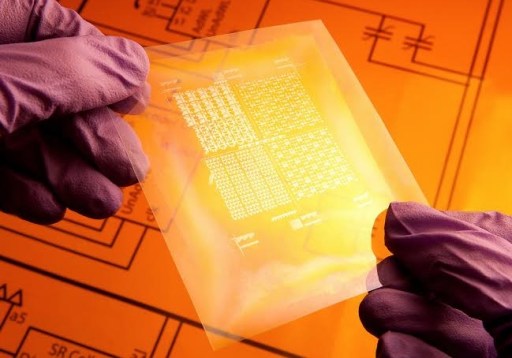Imagine a near future where there will be a wireless sensor on the bottom of every shampoo, detergent, and medication container. It will tell you how much product is left and trigger a replacement order once it gets to 10% full or approaches its expiration date.
Now imagine a future laundry detergent dispenser that is connected wirelessly to sensors in the washing machine and can mix multiple channels of active ingredients dynamically to suit the conditions of the wash and optimize the cleaning process.
This type of intelligent, personalized experience is not possible today, but it will be commonplace in the “Internet of Everyday Things” in which low-cost, even disposable products will have digital capabilities through low cost sensors and connectivity.
New Product Experiences
With the Internet of Everyday Things, consumer packaged goods (CPG) companies will for the very first time have visibility into how their customers are using their products in the home, and even more importantly, they’ll have the power to change the product experience in real-time to suit the specific user and environment. That’s really game changing for an industry that continuously worries about how to differentiate products and protect margins.
AI Weekly
The must-read newsletter for AI and Big Data industry written by Khari Johnson, Kyle Wiggers, and Seth Colaner.
Included with VentureBeat Insider and VentureBeat VIP memberships.
In many ways, this is an extension of the transition in value creation from standalone devices to connected systems that is already occurring with products such as the Nest thermostat that learns our patterns and preferences over time and controls our environment to save energy usage. We are also seeing exciting innovations in smart clothing and footwear that can adapt to changing environmental conditions and personal usage to improve athletic performance.
Creating a Digital Nervous System
But the Internet of Everyday Things goes beyond just personalization. The combination of sensing, control, and optimization creates a “Digital Nervous System” that can be applied at multiple levels to enable real-world, real-time optimization. For example, a retail store can be aware of which customers are nearby and, based on real-time inventory, generate the optimal set of offers that are delivered to its customers’ smartphones.
VentureBeat is studying marketing clouds.
Answer our survey now and we’ll share the results with you.
As another example, cities will be aware of real-time traffic conditions and accidents based on sensor data from fixed and human sensors through services like Waze. They will be able to use planning and optimization algorithms operating at the city-wide system level that will reroute drivers (or self-driving cars) through specific messages to individual drivers instead of just broadcasting notices on electronic signs that often result in secondary bottlenecks.
New Business Models
But even more profoundly, the Internet of Everyday Things will change the definition of what companies sell and how they sell, and companies will face competition from new players who compete with a different set of economics and value propositions.
Take Nest again as an example. Why did Google pay $3.2 billion for it? It’s because Google is in the business of monetizing data, and Nest generates data from its customers. Since Google can monetize the data, Nest will always have a pricing advantage over thermostat companies that do not have that ability.
Now let’s apply this kind of thinking back to CPG companies. They may think that they are in the business of selling consumables, but really they are selling outcomes such as clean clothes or a clean home. Many industrial manufacturers have already made the transition in business model from selling products to outcome-based services, such as selling jet engines via “Power by the Hour” with service level guarantees.
Could CPG companies provide new forms of sensing in the home through their products and packaging such that their customers could verify cleanliness? And if so, could they offer a business model like charging a subscription model for the outcome of verified cleanliness regardless of the amount of cleaning products actually used? It’s really interesting to consider all the new possibilities in business models and customer experience in the future.
Key Enablers
It may sound like this Internet of Everyday Things is still really far away in the future. After all, we need to make sensors cheap enough for disposable products. And you would be right if we were using silicon. But this is already in the present for companies, like PARC, that are developing the underlying technologies. We’re working with partners such as Thinfilm Electronics to develop printing-based manufacturing processes to create low cost electronics such as sensor tags that add intelligence to everyday objects.
To configure and manage these billions of products with IP addresses, we’re also working on a new technology called Content-Centric Networking that uses named content addressing instead of IP addresses to route data more efficiently, and encrypts data at the packet level instead of at the endpoints for improved security.
And to enable real-time planning and control on autonomous systems at large scale, we have been working in digital manufacturing, including AI-based planning and control software for reconfigurable systems that span hundreds of modules and thousands of variations that has led to in-memory graph-based planning algorithms that have the potential to scale to very large systems.
So while the Internet of Everyday Things may be farther away than we would like, it is closer than you may think. Now is the right time to think about how it will transform products and business models and start experimenting with sensors, analytics, and services to learn what’s possible, in what form factors and user experiences, and at what price points.
Lawrence Lee is senior director of strategy for PARC, where he manages innovation strategy and commercialization of PARC’s R&D services for Xerox and its global clients. He also shares PARC’s best practices in innovation management with companies around the world seeking to adapt them for their own goals.
VentureBeat's mission is to be a digital town square for technical decision-makers to gain knowledge about transformative enterprise technology and transact. Learn More


